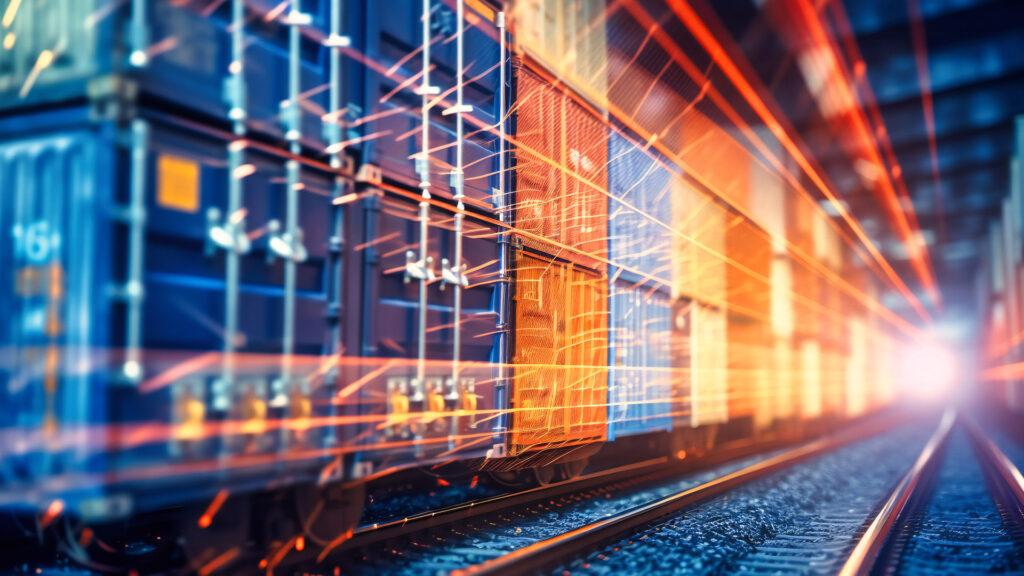By Taherah Kuhl, Global Vice President – Business Services Industry, Dassault Systèmes
Governments across the world are increasingly recognizing the importance of rail transport in achieving net zero carbon emissions by 2050. As a result, there has been a resurgence in the development and revitalization of railway systems after decades of underinvestment. Rail transport offers numerous advantages – including eco-friendliness, enhanced safety, and reliability – setting it apart from automobiles or airplanes.
Further electrification and decarbonization of power supplies can make rail an even more sustainable form of a mobility solution. The fact that 17 of the 20 most traveled airborne routes in Europe have distances that do not exceed 700 kilometers, make them ideal for fully shifting to rail. In fact, governments have already started going in this direction. For example, France recently signed into law a ban on short domestic flights, specifically targeting routes where alternative high-speed rail services are available.
CO2 emissions due to transportation are poised to increase 22% by 2050 if current trends continue. Statistical evidence shows that rail freight is crucial to a cleaner and greener future.
Investments support sustainability and efficiency
“Rail transport projects worth USD 6 trillion are currently underway globally, and the market size of global passenger and freight traffic is expected to grow at a CAGR of 11% during 2020-25. These investments will bring about significant improvements not only in passenger movement but also in freight traffic.”

When compared to other rapidly growing industries such as hospitality and travel, rail demonstrates a high CAGR in terms of annual construction growth. The reason lies in the central role of sustainability in positioning rail at the center of development of future transport networks.
Over the past 50 years, rail fell out of favor among mobility planners as more individuals turned to cars and airplanes for travel. However, today, rail plays a central role in companies’ plans to achieve the net-zero emissions targets which is driving collective efforts worldwide.
Rail is currently experiencing a resurgence after a prolonged period of decline not only in usage and investment, but also in technology. During this period, rail companies adopted technology from other industries that were originally developed to meet entirely different sets of requirements. Additionally, rail organizations worldwide built their own in-house technology solutions that did not align with the evolving needs of rail transport.
An integrated technology strategy
What the rail industry needs is a truly integrated approach to technology. For example, when disruptions happen in rail operations, it is rare that this disruption is seen in isolation. Whether it is demand for crew, fleet, or the network, things need to work simultaneously and in conjunction with each other.
When organizations use fragmented or disconnected rail mobility solutions, the outcomes often fall short and do not take the actual needs of customers into account, whether they are passengers or businesses.
The overall technology approach should not only focus on cost reduction and efficiency improvement, but also prioritize sustainability. Achieving net zero emissions targets becomes easier if organizations can make rail operations more efficient.

A comprehensive rail technology solution should be able to visualize, plan and operationalize crew management software for rail, locomotive, fleet, and network capacity management as well as enable predictive maintenance and servicing.
Integrated rail planning software keep the customer at the center of all operations. Dassault Systèmes offers a holistic solution for end-to-end rail operations, encompassing operations scheduling, planning for above- and below-rail components, off-network planning, predictive fleet maintenance, and infrastructure development such as tracks and signaling.
We enable sustainable rail operations by capturing data from multiple sources and maintaining a holistic view of operations through the virtual twin. In addition, Dassault Systèmes DELMIA product portfolio includes solutions that make every facet of rail operations more efficient and sustainable.
The solution for rail infrastructure managers supports network topology and version management as well as network capacity planning and traffic management. For train service operators on the ground, the solutions enable operating network definition and version control, and train service planning and optimization for on-demand and timetabled operations.
Similarly the fleet planner can be used for planning and optimization of trains, wagons and locomotives. The crew planner supports real-time crew demand forecasting, rail crew planning, scheduling and operations as well as crew time and attendance management. There are plans to extend the rail transport solutions to cover yard planning and occupation management, rail network maintenance and freight terminal operations.
The virtual twin – key to deep visualization
“The virtual twin optimizes operations and drives the simulations to monitor and improve the reliability of railway assets by assimilating, integrating and visualizing data from multiple sources. This includes, for instance, data on predictive maintenance, traffic conditions and track layouts.”
Dassault Systèmes virtual twin provides a major advantage over digital twins that are typically digitized maps or mere digital replicas of physical structures. It makes collaboration across the rail ecosystem seamless and sets the stage for innovation. The virtual twin is central to the Dassault Systèmes solutions for rail operations sustainability and efficiency.
Dassault Systèmes’ advantage is that it is the only provider with a comprehensive set of solutions and a virtual twin that facilitate visualization, design, testing, simulation of rail infrastructure development with real-time data. At the same time, the same virtual twin can also be deployed for monitoring and automating end-to-end operations through their entire lifecycle from planning, scheduling, running, and maintenance, to end of lifecycle management activities.
Rail operators across the globe can make their operations efficient and sustainable using integrated solutions such as the virtual twin in the same way companies in the aerospace and aviation industries have already done. An integrated approach to technology is the most fail-safe strategy for rail operators to reduce costs, streamline operations, and achieve net-zero emissions ahead of competition.
